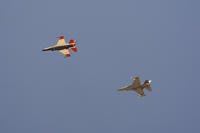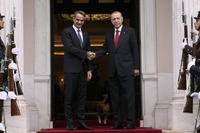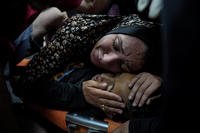From the AP and NPR reports, you'd think that the the big deal about the military's revamped IED training course was new, mock buildings that the government put up for the class. You'd be wrong.
When [a bomb technician] was deployed to the Balkans in the late 1990s, his main task was to sweep unexploded ordnance from battlefields and firing ranges once the action was over. He followed a cold war playbook - when to get the tools out, when to just blow something up. But that playbook only works when you're up against mass-produced bombs. Guerrillas in Iraq cobble together weapons from whatever they can find. A bombmaker in Mosul might use dynamite and a timer from a washing machine. One in Baghdad lashes artillery shells to a motorcycle battery and a cordless telephone. Insurgent cells swap tactics on Web sites, and when American forces catch on, the terrorists move to newer tactics...
The ever-shifting conflict is forcing bomb squads to develop new, more improvisational tactics. On the red clay ranges of the military's EOD [explosive ordnance disposal] school in Niceville, Florida, Marine gunnery sergeant Eric Slachter teaches the next generation of bomb-disposal troops. His syllabus: There is no syllabus. "The basic classes here, they're all about following procedure. This is an advanced course - you think on your feet. You've got a brain, some experience. Now use it," he says. "We'll take it from the headlines, what killed a GI. We'll make that device. And we'll learn to defeat it."
Not too long ago, IEDs were treated as almost an afterthought during explosives training. They were the pipe bombs that 16 year-olds left in school libraries -- kid's stuff, really. Real men handled roomfuls of grenades, or thousand-pound building-killers.
Some of the feaux-buildings at Eglin reflect that history. There's a mock library there, in fact, with books and everything. But that's a relic of the past, not a pointer to the future. Which is why it's particularly silly for the press to focus in on it.
(Full disclosure: NPR's Phillip Davis interviewed me for his story on the IED school. I tried to tell him all this. But I didn't make it into his piece. Some might say, then, that this post is sour grapes. But really, I'm just sour about the point of the story being missed.)








